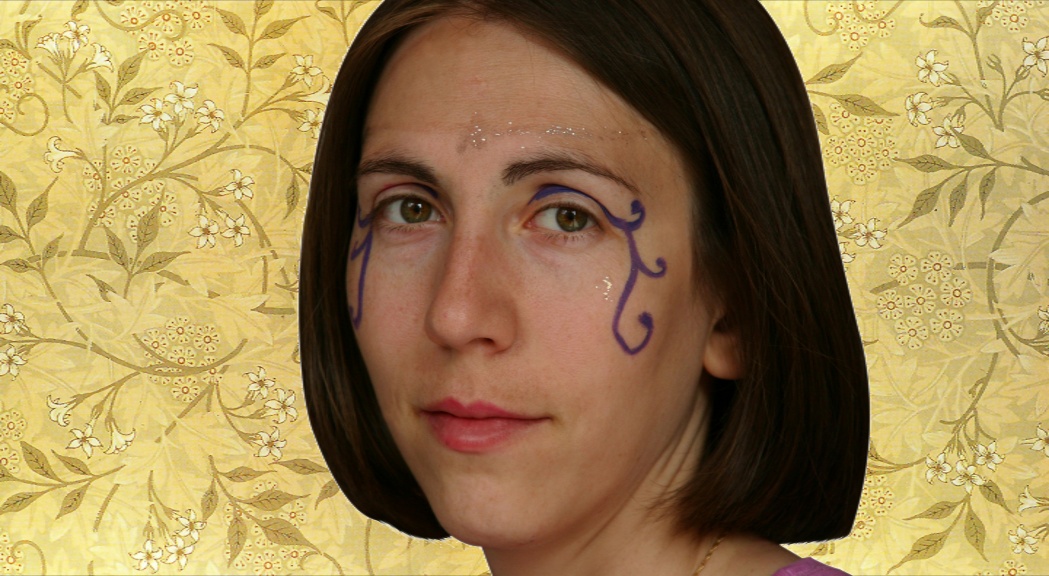
Natalie Dekel.
Portraits and Encaustic Wax painter, Natalie Dekel, interviewed by Gil Dekel.
Gil Dekel: When did you start painting?
Natalie Dekel: I was left-handed and my mother was worried that I will not be able to use my right hand. Where I was born and grew up, everyone had to be the same and had to write in school using their right hand only… So at the age of one my mother gave me a lot of pencils and told me to draw using my right hand only. I ended up being able to work with both hands.
Can you paint with both hands?
Yes.
Is there a difference?
Yes. I use the right hand to create decisive lines, geometrical, logical. And I use my left hand to paint with colours, and to paint without thought, without thinking. Line is more a thought personified and the evolution of it. Colour builds up emotional layers. Every colour creates a certain resonance. As you draw with colours you build up a story around emotions that evolve and can create responses within the viewer.
Which masters of art influence your portrait works?
I admire Rembrandt because he is the master of soul portraits. Every painting he has done, you look and you can almost feel the breathing, the heart beatings, and the sweat on the person’s face. He manages to transform the time and the place beyond limitations. It is a transgressive time. In Holbein’s portraits I see real people that I could imagine living today. I also like Egon Schiele for his line. It is a living line expressing emotions.
What attracts me is the expression. Sometimes somebody is perfectly able to express a realistic line, but the line is dead on the paper. I am searching for this something that makes my heart beat faster when I see it. Looking at a painting and becoming it; feeling for the person drawn. In those moments you forget you are looking at it, just like reading a good book and forgetting you are reading it. You become part of the story.
A good painting is not one among thousands hung in a museum that you pass through quickly, getting tired, having to do so because of a ‘duty’ to the history of art. That is not beauty. I believe that a good painting stops you, like Klimt’s The Kiss. You look at it and it absorbs you. You become this beautiful meditation, a part of the scene, and through this experiential knowledge you feel the meanings of that art work.
Many people go to see paintings in the museum, but may not see what you see. Is art for artists alone then?
No. I believe that there is no such thing as one definition of art that everyone should succumb to. If you ask ten people to look at the same painting, each one will see different things in it. Let’s take Mondrian. For me, Mondrian’s work is too analytic; too much thinking. The work is standing still, and I feel very subtle, very withdrawn. Being an emotional person, there is so much beyond his work that I cannot connect with. And yet for you, when you look at a Mondrian, you can almost feel the beat of the lines, the basic colours, the balance of the shapes. For you it makes sense much more, because that is the type of a person you are. So, it depends on the personality, not on the work. What I see is what interests me as a person.
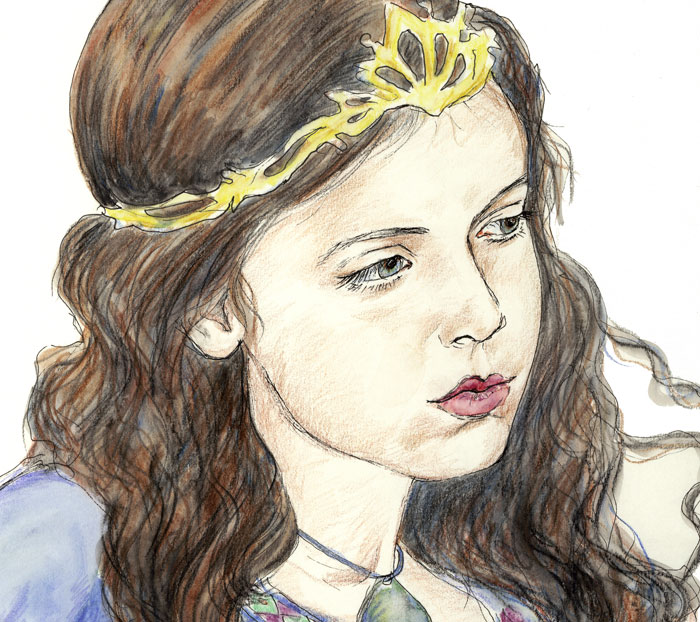
Natalie Dekel – ‘Yael, The Princess of Ancient Israel’ (detail). 21cm x 42cm, pencils on card, 2010.
It seems as if art is more expressive than communicative?
It is not less communicative, but simply communicative on different levels. The beauty of it is like the beauty of words. A word is a symbol, so when I say ‘a chair’ both of us understand a chair, but we imagine different chairs. I might imagine an 18th century style chair, while you might imagine a wood rocking chair. We both talk about a chair, but the feelings, the background and the emotional experience are different. The content is the same, but the context is different. The same goes for paintings. When you look at a painting it is a symbol and it will communicate right for every person on their level, on what interests them.
Why do you paint?
It’s a compulsive urge, a way to express myself. I feel better and more confident to express the little nuances I see around me in visuals than in words, maybe because I speak several languages and none of them is actually my own, as such. So whatever I could describe in words is less significant than seeing an image which can strike you, ‘Yes, that’s me!’
Painting helps me to self-develop and evolve. If my work can help others to evolve or even raise a thought in someone, then I will be honoured.
Your recent project is ‘past lives portraits’ and ‘guided portraits’. What is your attraction to portraits specifically, and not to other forms such as nature?
Everyone is talented in certain areas, or rather, interested in certain areas. I am fascinated with people. When I was little I had a feeling that I am here on Earth by a mistake, by chance. And I was looking around me at people who I thought could not understand me or what I am. At first there was a gap between how I thought as a child to how other children thought. I felt too mature for them. Later on I just felt different, and I was fascinated with these ‘other beings’, people, that are not me.
Each time I see a person I can see something which is like an exploration of another aspect that I do not have, do not know about, and is beautiful. Human beings are microcosmos of macrocosmos which got everything in it: thoughts, emotions, nuances, relations.
How did you come to draw people’s past lives and not their present lives?
Even though we are in the present moment and I am depicting someone’s face in the present, there is emotional and physical luggage of past lives and past experiences that I feel compelled to express and show. I will take the present time personality and contextualise it in the past. What’s interesting is that when I see you it is not just how I see you now, but how other information about you which is not from now is coming from the past. It is right behind you. This information ‘bombards’ me and I want to depict it. Perhaps it will be a message for you about what carries on within you. People carry a lot of stuff with them. Sometimes it is more prominent and I see it clearly, maybe because I personally knew the person in the past.
How do you receive this information about people’s past lives?
I just look at them and I have a feeling about it. I see them.
How did the past lives portraits project begun?
It started with self-portraits of past lives which were influenced by other paintings of great masters. Then it evolved to self-portraits inspired by my imagination. Then portraits of other people, and lately I’ve been drawing portraits of ‘invisible’ people, spirits that come to my mind and which I cannot see elsewhere. So I paint what I see in my imagination, like the following portrait, Keith:
How did you see him in imagination?
Initially I did not see him as a person, but as a being, an essence, a spirit figure. I saw a white outline, a symbol. I didn’t see his face at all. As I drew I had to ask him, ‘Do you have dark hair? What colour are your eyes?’ Actually he has darker hair than what I drew, but I wanted to have a lot of white to give the feeling that he is not here any more; non-physical. So the hair got lighter. What I saw in my imagination is the intensity of his eyes. Very powerful. I would ask the question, and would be given an image where I could see a part of his face that I then drew. Eyes, then hair, feelings, memories. He would convey to me and I would draw it.
» See other Spirit and guided portraits, by Natalie…
How do you translate feelings to colours?
If I have a feeling it may be like asking oneself, ‘Remember omelette?’ and I say, ‘Yes, that is how it felt.’ So omelette is soft, fluffy, white yellowish. Then I ask, ‘How did your eyes look?’ and he says, ‘When I was looking there was an intense blue.’ And so I draw intense blue, and as I draw I keep asking, ‘Is that right?’ and if not then I get an image or a sound to guide me. The hair is a bit wavy and dark. He loved to go with his hand through his hair. So when I was asking about the hair, he did not give me the colour, but the whole feeling. What it felt like to have hair and put your hand through it.
It is perhaps a thought, a word, a feeling, or just an urge that comes up. Sometimes you feel hungry and you think, ‘I feel like having pasta now.’ Why did you decide to have pasta? Isn’t it a kind of an unexplainable feeling for a particular taste? This is the urge I get to paint.
How do you translate emotions to colours?
I presume it is quite easy. Like the Chakra’s colours. If it is positive and light bubbly, I will use pink, blue, yellow. If it is heavy, earthy, it is darker colours. The same with shapes. Sometimes you let go and let your hand choose for you. You don’t think. Drawing then becomes flowing like automatic speech.
Is there a difference between drawing yourself and others?
You seem to know the light of your own self better. Even if you change, and we all do, at least you are familiar with the lines, so it is easier to observe the changes and to focus on the messages behind lines.
When you draw other people you need to learn them: how they see reality, how they feel, how their eyelashes curve, how the nose goes. You need to learn everything anew. It is like each time learning what it feels like to touch the sand, because on every beach the sand is different. You need to learn the topography of the face, and the lines of emotions. One person will blink differently when they are happy, perhaps hold the mouth differently. Every single line depicts emotion, and you need to become a psychologist of the person before you can depict the emotions in their face.
If the artist knows herself, how can she observe and paint a self-portrait?
You never know yourself completely. To paint yourself you detach yourself to observe what is it that you are looking for. When I draw I never know; I know only what I expect to find more or less, but I never find the same thing.
How do you detach yourself from yourself?
I don’t draw the self. I draw the body that contains the self, and the body keeps changing.
You draw the body or the soul?
I am trying to convey the soul and the emotion behind it; a soul which is contained in a bottle, a body. This body is what I am focusing on because that is what we can understand.
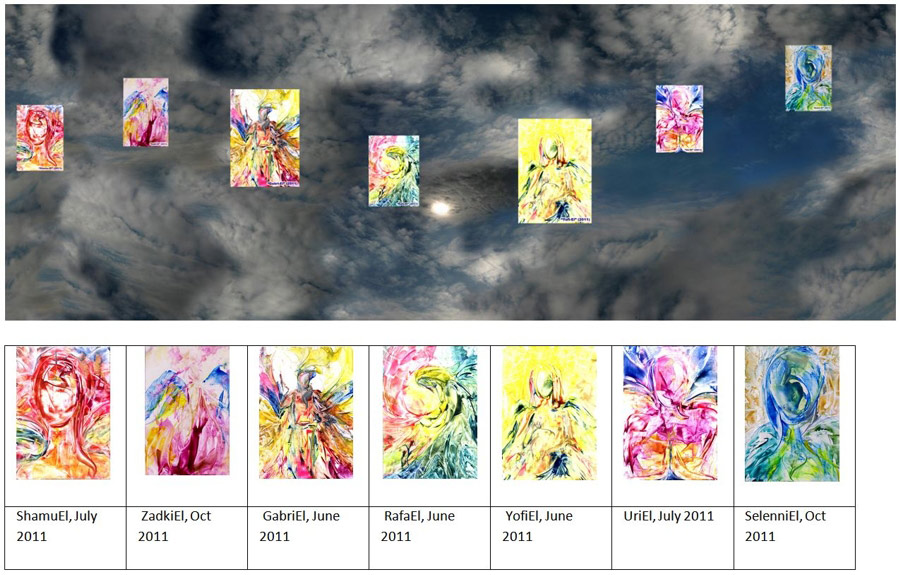
Chamber of Air – Elements of the Universe, Encastic wax 360 degrees exhibition, by Natalie Dekel, 2011. See: https://www.poeticmind.co.uk/wordimage/elements-of-the-universe-encaustic-wax-virtual-exhibition/
How do you convey the soul in the body?
By learning the nuances of every single line in the face. Each line shows how you think, what you eat, how you behave. Who you are. Our faces are maps. According to Chinese natural medicine, you can even look at one’s ear and tell one’s health.
Can you look at someone’s hand in the same way?
Yes. Van Gogh even looked at shoes. He did portraits of shoes. And that was a complete portrait, because the way you wear your shoes tells a lot about you. Light walker, heavy walker, do you look after the shoes, the type of shoe you choose. The shoes become you, they bear the message you imprint upon them with each step. With people’s faces it is not different. The way you wear your body shows who you are.
Once you capture an essence, a message, isn’t it then fixed in the painting?
It is; however, portraits are snapshots in time; that is what they are. Rembrandt did many self-portraits through his life, and each one continues to exist. You as a personality change every single second, just like your cells changing each second. Some scientists believe that each year most of the body’s atoms are replaced by new atoms, so each year we get a new body. It is not even the same person that is drawn a year later. You take different snapshots and show the evolution of the self within the body, so you can look back and reflect.
How do emotions relate to thoughts?
They are like different pitches in music. You can have low pitch and high pitch. One is thought and the other is emotion. When they come together they produce a painting.
» ‘How Do I Close My Eyes To See?’: Encaustic wax paintings by Natalie Dekel…
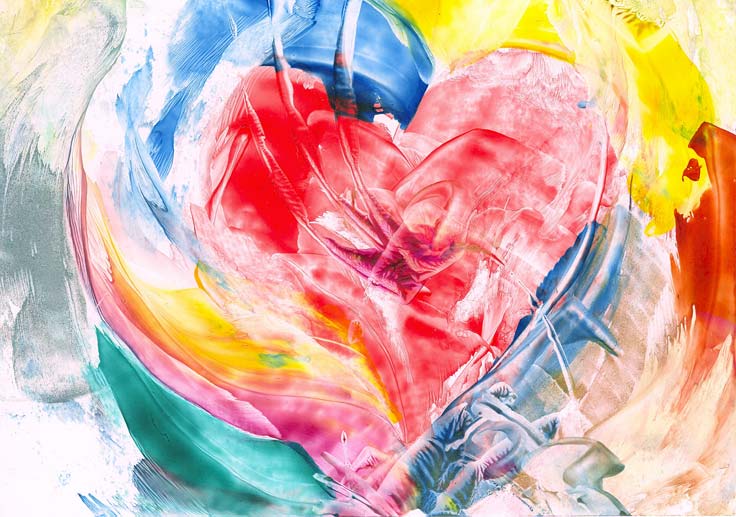
15 June 2008. Updated 20 Sep 2012.
© Natalie and Gil Dekel. Interview held in Southampton, UK, 15 April 2008.

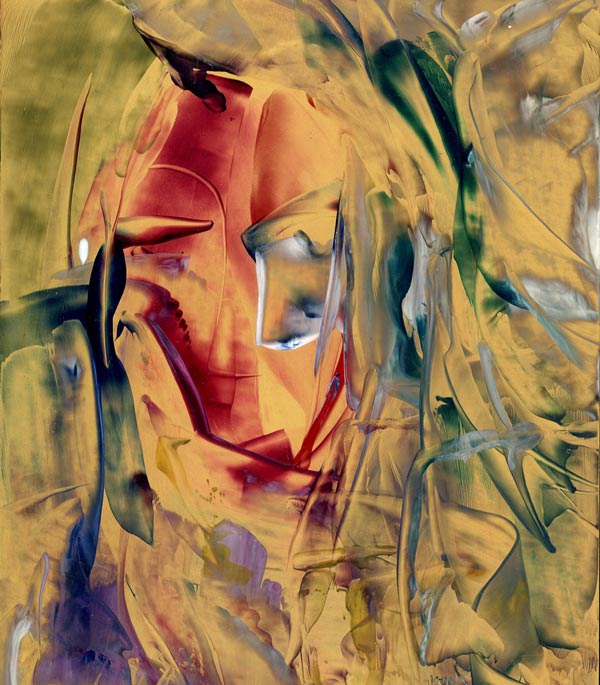
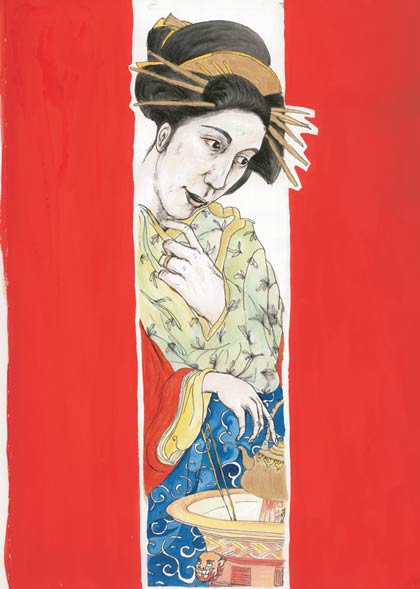
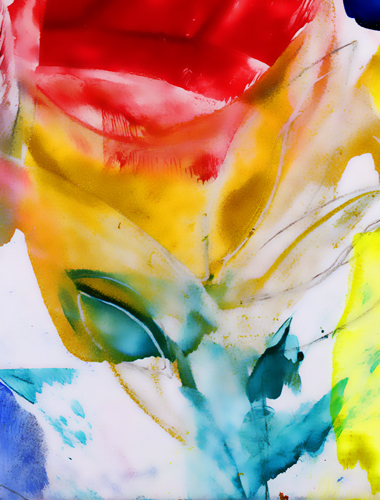
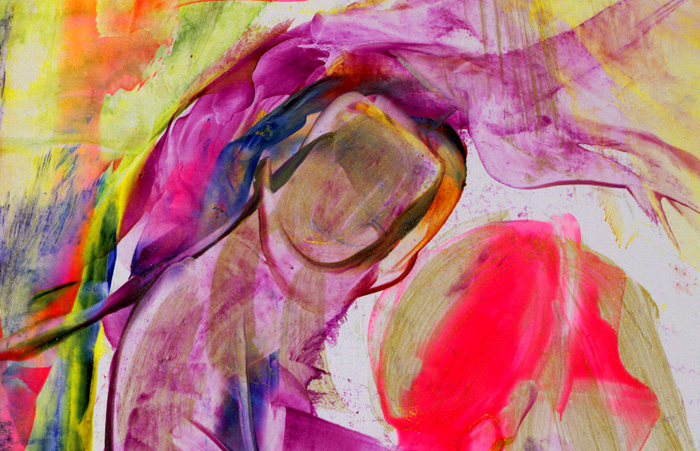
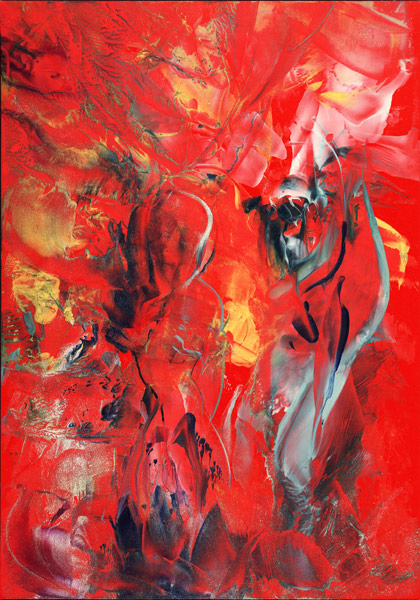
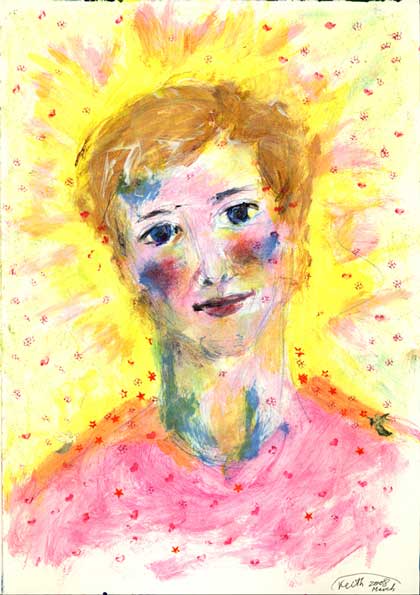
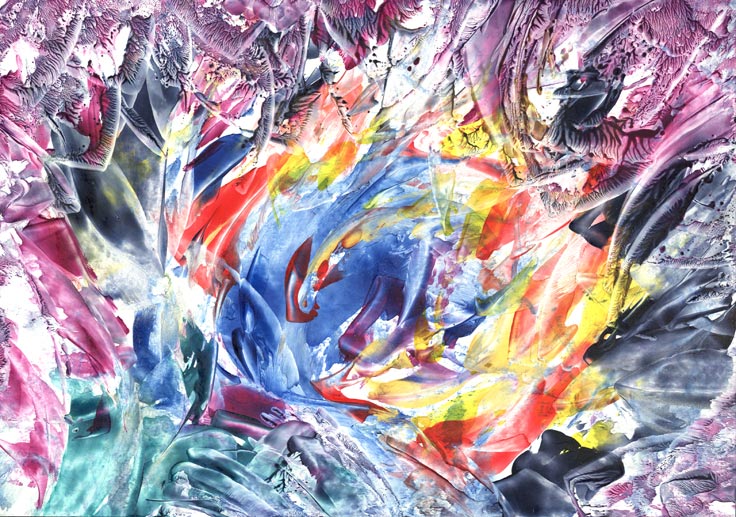
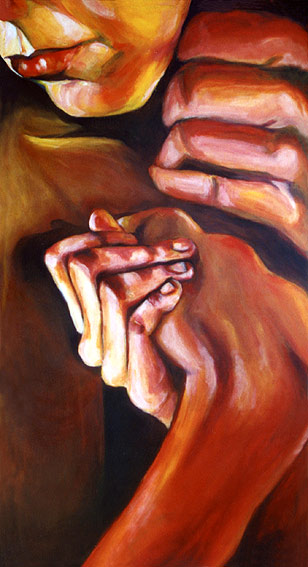
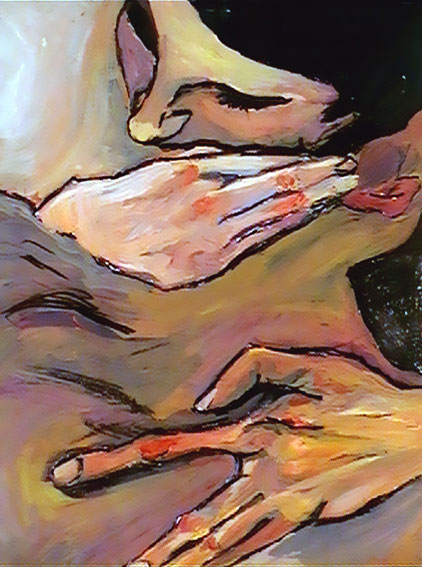

 - Reading with Natalie, book here...
- Reading with Natalie, book here...